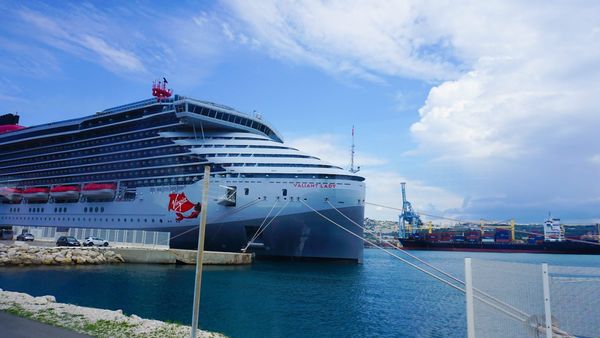
There was a lot of sound and fury about China’s recent live-fire exercises off Australia’s coast. But in the backwash of that diplomatic incident, a US nuclear submarine has slid silently into port on the other side of the country and offered up a glimpse of life below the waves for Australia’s key strategic ally.
It is the seventh nuclear-powered submarine to arrive at HMAS Stirling naval base, about an hour south of Perth, since the Aukus defence pact was struck in September 2021.
The vessel arrived the same month Australia made its first $800m payment of a promised $368bn to be made under the Aukus agreement, which will see Australia buy three nuclear-powered US attack submarines and build eight others by 2050.
On board the Virginia-class, fast-attack USS Minnesota, the 140 crew were tight-lipped about these wider geopolitical games, and would not let on about how long they are in Australia’s waters, or where they will travel next.
“Our visit today is another step that continues progress towards establishing the Royal Australian Navy’s sovereign, conventionally armed, nuclear-powered submarine force,” US commanding officer Jeffrey Cornielle said.
“We will be increasing our relations with our submarine brothers and sisters here in Australia, we are doing some events with the town and the base.”
The corridors inside the 115-metre long submarine are tight, the sleeping quarters tiny, and while steak and lobster are on the menu, alcohol and sexual relations are strictly forbidden.
The Virginia class can reach depths of 240 metres and hit speeds of 46km/h. Inside, the Minnesota’s crew sleep alongside a hull loaded with 23 torpedoes.
Cornielle says it takes a team of six people to work the hydraulics to load each torpedo in readiness to fire.
Up in the control room, the traditional periscope, once a massive tube requiring a sailor to press their eye to a viewfinder, has been replaced with a system that is controlled by an Xbox controller.
With a fibre-optic mast similar to those used on the International Space Station, the submarine’s periscope feeds a high-definition image of the world above on to screens, giving the crew a crystal-clear view of the sky, the sea and any potential threats lurking nearby.
Unlike its Australian diesel-electric counterparts, nuclear power ensures the USS Minnesota does not need to surface for fuel. On average, it spends about 30 days at sea before docking to load up on fresh food supplies.
The Minnesota’s executive officer, Tommy Plummer, has spent two of the past three years underwater, subject to the disciplined and rigid routine of submarine life where tasks are meticulously scheduled and showers are limited to 30 seconds per person. One surprisingly crucial piece of equipment is the single, industrial-sized laundry dryer, which runs around the clock – it “would be a disaster” if it broke down, one crew member joked.
There are no windows and limited personal space. “You become like a family, and you get to know things about people that you just don’t need to know,” Plummer said.
Despite the hardships and 18-hour shifts, Plummer nevertheless joked that life is easier on a submarine than it is for his wife back home, dealing with the challenges of parenting their three children.
The USS Minnesota is currently training naval officers to become commanders and is the first of two planned fast attack submarines to moor at HMAS Stirling in 2025.
Cornielle says the sailors are excited to see their Australian counterparts, some of whom they have trained with before.
“The submarine [crew] bond is not one that is easy to explain but it is tighter than most that you would think,” he said.







